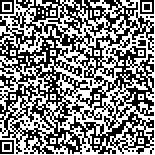下载中心
优秀审稿专家
优秀论文
相关链接
首页 > , Vol. , Issue () : -
摘要

中国风云三号(FY3)卫星是国际气象组织组网卫星之一,其搭载的微波成像仪(MWRI)可为气象研究、天气预报等多个领域提供有效数据。在应用MWRI数据进行多频率探测通道的协同反演时,必须考虑通过重采样来使不同探测频点的数据具有一致的空间分辨率。Backus-Gilbert(BG)方法是一种被广泛用于星载微波辐射计亮温数据重采样的方法。传统重采样方式应用BG方法计算辐射计单次旋转扫描得到的采样点的权重系数(预计算权重系数),并将其直接应用到所有旋转扫描获取的采样点上,进而完成全部数据的重采样。然而,在卫星仪器的采样过程中,地球椭球面等因素的影响会导致观测视场之间的相对位置发生改变,将预计算权重系数直接应用到全部数据会给重采样带来误差。因此,本文提出一种结合天线方向图投影定位方法的重采样方式,详细分析了MWRI数据在不同轨道位置的重采样效果。实验结果表明,本文采用的重采样方式能够在MWRI的不同的通道组合上修正传统重采样方式造成的平均1.32 K的亮温误差。本文指出并修正了重采样亮温的一种误差来源。未来在使用多频率探测通道数据协同反演地球物理参数时,根据反演参数对亮温变化的敏感程度,应用本文方式获取的重采样数据可以获得更准确的反演结果。
Objective and Method: The Microwave Radiation Imager (MWRI) on China"s Fengyun-3 (FY3) satellite can provide effective data for various fields such as meteorological research and weather forecasting. When using MWRI data for co-inversion of multi-frequency detection channels, it is necessary to consider resampling to make the data of different detection frequency points have a consistent spatial resolution. The Backus-Gilbert (BG) method is a widely used resampling method for spaceborne microwave radiometers. The traditional resampling method uses the BG method to calculate the weight coefficient of the sampling points obtained by a single rotation scan of the radiometer (precalculated weight coefficient), and directly applies it to all sampling points obtained by the rotation scan, thereby completing the resampling of all data. However, during the sampling process of satellite instruments, the influence of factors such as the ellipsoid of the earth will lead to changes in the relative positions between the observation fields, and directly applying the pre-calculated weight coefficients to all the data will bring errors in resampling. Therefore, in this paper, based on the orbit parameters and pattern information of FY3D MWRI, we propose a resampling method combined with antenna pattern projection positioning, and analyze the resampling effect of MWRI at different orbit positions in detail. Result: In the resampling experiments with fixed scan lines, we implement resampling for different combinations of source and target channels on the 200th scan line of the sample data. The results show that the traditional resampling method can achieve a better resampling effect by applying the BG method on a fixed scan line. In resampling experiments at different scan lines. We randomly selected sample data in the time range from 20190401 to 20191211, and calculated the positional changes of the adjacent points in the source pattern of the 1st, 44th, and 133rd scan columns with the increase of the scan lines of the sample data. The fit error due to positional changes is then calculated using precomputed weighting factors. The maximum change in the position of the adjacent points can lead to a deterioration of the fit error of about 0.09. In the error analysis experiment, we verified the correction effect of the resampling method in this paper on the brightness temperature (BT) error on the MWRI sample data and long-term data by calculating the distribution of the BT difference between channels. Specifically, the resampling method adopted in this paper can correct the average BT error of 1.32 K on 10 different channel combinations of MWRI. Conclusion: In conclusion, this paper analyzes the resampling effect of the MWRI instrument at different orbital positions in detail. A source of error in resampled BT is pointed out and corrected. In the future, when multi-frequency detection channel data are used to collaboratively retrieve geophysical parameters, more accurate retrieval results may be obtained by applying the resampled data obtained in this paper based on the sensitivity of the parameters to changes in BT.

